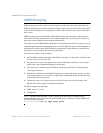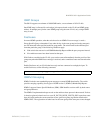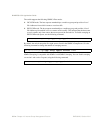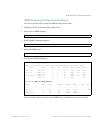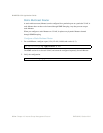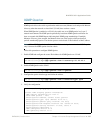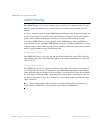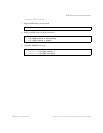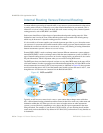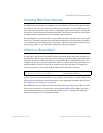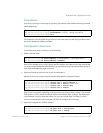
BLADEOS 6.5.2 Application Guide
256 Chapter 18: Internet Group Management Protocol BMD00220, October 2010
IGMP Filtering
With IGMP Filtering, you can allow or deny a port to send and receive multicast traffic to certain
multicast groups. Unauthorized users are restricted from streaming multicast traffic across the
network.
If access to a multicast group is denied, IGMP Membership Reports from the port are dropped, and
the port is not allowed to receive IPv4 multicast traffic from that group. If access to the multicast
group is allowed, Membership Reports from the port are forwarded for normal processing.
To configure IGMP Filtering, you must globally enable IGMP filtering, define an IGMP filter,
assign the filter to a port, and enable IGMP Filtering on the port. To define an IGMP filter, you must
configure a range of IPv4 multicast groups, choose whether the filter will allow or deny multicast
traffic for groups within the range, and enable the filter.
Configuring the Range
Each IGMP Filter allows you to set a start and end point that defines the range of IPv4 addresses
upon which the filter takes action. Each IPv4 address in the range must be between 224.0.0.0 and
239.255.255.255.
Configuring the Action
Each IGMP filter can allow or deny IPv4 multicasts to the range of IPv4 addresses configured. If
you configure the filter to deny IPv4 multicasts, then IGMP Membership Reports from multicast
groups within the range are dropped. You can configure a secondary filter to allow IPv4 multicasts
to a small range of addresses within a larger range that a primary filter is configured to deny. The
two filters work together to allow IPv4 multicasts to a small subset of addresses within the larger
range of addresses.
Note – Lower-numbered filters take precedence over higher-number filters. For example, the
action defined for IGMP Filter 1 supersedes the action defined for IGMP Filter 2.





